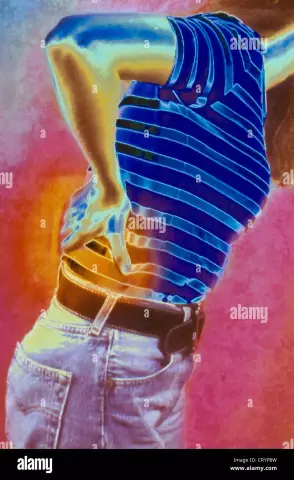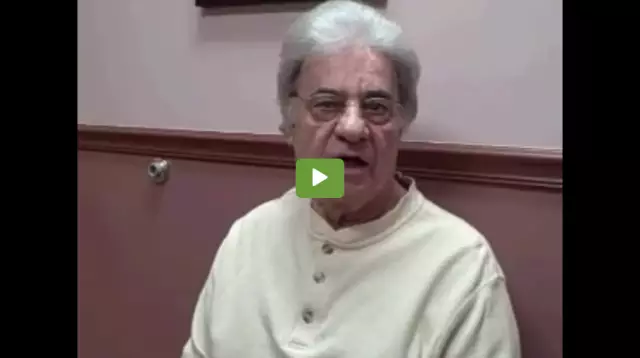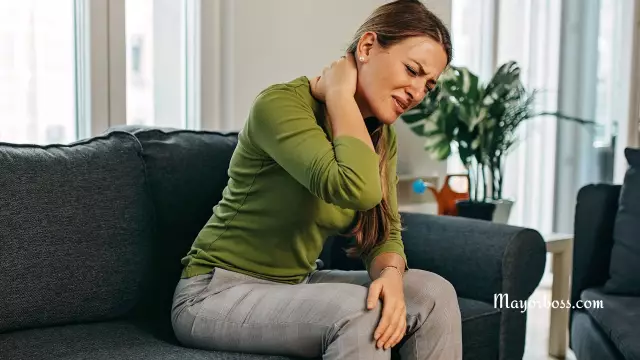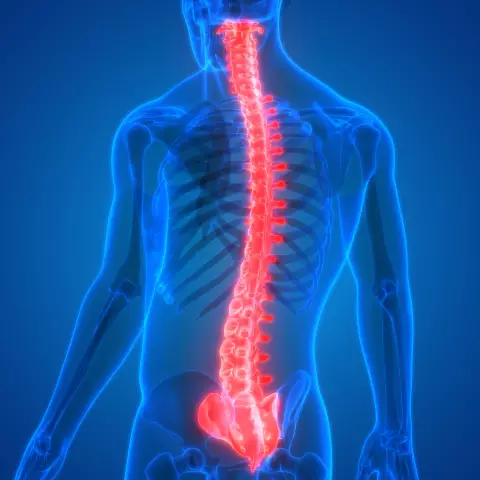- Author Rachel Wainwright [email protected].
- Public 2023-12-15 07:39.
- Last modified 2025-11-02 20:14.
Pain in the back of the head - what to do

Each person at least once in his life has encountered such an unpleasant sensation as a headache in the back of the head. This could be the result of physical fatigue or mental stress, and often the excess amount of alcohol drunk the day before. As a rule, these symptoms are not chronic in nature, if the above reasons are not the norm in everyday life. If pain in the back of your head becomes a constant companion, it is very dangerous to ignore such signals from the body. Often, this symptom can mean a serious illness that requires prompt treatment or medical intervention.
The main causes of pain in the back of the head
When the back of the head hurts, there can be many reasons for this. Moreover, sometimes it is difficult for a person in such a situation to determine what exactly hurts: the head or the upper part of the neck, because such pains tend to move from one area to another. In addition, painful sensations can be both constant aching and sharp sudden, and sometimes only arise when turning or touching. Typically, they are related to the specific disease or problem causing the pain.
So, if the back of the head hurts, one of the following diseases can be the cause:
- Arterial hypertension;
- Prolonged nervous tension;
- Prolonged physical stress;
- Mental overwork;
- Diseases of the cervical spine;
- Cervical spondylosis;
- Cervical migraine;
- Muscle leakage;
- Muscle tension;
- Neuralgia of the occipital nerve.
This is an incomplete list of ailments that can cause severe pain in the back of the head.
Perhaps the most common cause of this ailment is high blood pressure. As a rule, people over the age of 30 suffer from hypertension, but often a similar diagnosis is observed in young people. Thus, if pain occurs in the back of the head, the first step is to measure blood pressure. The indicator is considered the norm: 120/80.
Often, pain in the back of the head is the result of stress, as well as mental and physical strain. Stress pains are more common in women over 30, but they can also bother men. Do not forget that our physical condition is a reflection of the psychological one. Also, occipital pain becomes chronic in most people leading a sedentary lifestyle: the constant presence in the same uncomfortable position and lack of physical activity will certainly make themselves felt.
Diseases of the cervical spine are distinguished by some characteristic features, by which one can judge the disease in this particular area. So, with osteochondrosis, spondylitis, various sprains, pain in the back of the head occurs with any, even minor movements of the head. Cervical spondylosis, on the other hand, involves painful sensations even in a motionless position or in sleep. With cervical migraine, pain in the back of the head is accompanied by throbbing pain in the temples, sometimes nausea, vomiting, and blurry vision.
Myogelosis, or muscle leakage, is familiar to almost everyone. It can be triggered by a prolonged stay in an uncomfortable position, for example, in a dream, a draft, poor posture, etc. Also, a long stay of the body in the same position (while reading, at the computer, etc.) leads to muscle tension that causes pain in the back of the head. Dizziness and tinnitus may be additional symptoms. People who experience muscle tension often complain of a hoop squeezing the skull.
Diseases of the cervical spine, left unattended, often contribute to the emergence of such an unpleasant disease as neuralgia of the occipital nerve. This ailment is manifested by the alternation of constant aching pains with severe attacks of sharp.
And, of course, if the back of the head hurts, the cause may be traumatic injury (for example, a bruise, a blow to the head, or when falling). Often a person quickly forgets about what happened if the pain does not make itself felt immediately. However, such injuries are often associated with concussion or serious damage to brain tissue.
Treatment of pain in the back of the head
Nevertheless, even knowing all the main and accompanying symptoms, it is very difficult to diagnose the disease on your own, without being a practicing doctor. Therefore, at the very first signals of the body, manifested in the form of pain in the back of the head, a medical examination is necessary. Do not forget that if the back of the head hurts, only an experienced doctor can prescribe treatment that will lead to the desired results.
To establish a diagnosis, you can contact the following specialists:
- Cardiologist;
- Neurologist;
- Traumatologist;
- Exercise therapy doctor.
If a headache in the back of your head catches you by surprise, you can temporarily relieve it with good ventilation and light massage. Before that, you need to take a lying position and relax as much as possible, and, if possible, try to sleep.
But very often the pain in the back of the head is so severe that a person is simply not up to sleep. The most common methods of eliminating such pain today are:
- Medicines;
- Manual therapy;
- Physiotherapy;
- Massage.
However, it should be noted right away that not all of the listed methods are effective for occipital pain, since their effect directly depends on the disease that causes it. For example, with problems with the cervical spine, in particular, with osteochondrosis, pain medications are practically powerless. It is better to use manual therapy and acupressure here. And in the presence of high blood pressure, medications help much better than massage procedures, which in this case can even lead to the opposite effect.

Also, when the back of the head hurts, treatment can be carried out using traditional medicine. Aromatherapy helps well with such pain: inhaling the scent of mint, lavender or lemon can soften and eliminate pain. Sometimes drops of peppermint, rosemary, pine or lavender oil are rubbed into the whiskey.
Occipital pain with migraines and fatigue is treated with a hot compress on the back of the head and a glass of hot tea. However, for some people from such ailments, on the contrary, massage of the nape area with an ice cube helps better.
Pain in the back of the head is also relieved with a compress from a cabbage leaf. Often, such a folk recipe helps to eliminate it: a piece of woolen cloth is moistened with a mixture of vinegar and olive oil in equal doses and applied to the sore spot.
To avoid the appearance of pain in the back of the head, one should not neglect morning exercises and walks in the fresh air. When working at a computer, you need to take breaks every hour to prevent muscle strain. You should also remember that smoking and alcohol only exacerbate headaches.
YouTube video related to the article:
Found a mistake in the text? Select it and press Ctrl + Enter.






